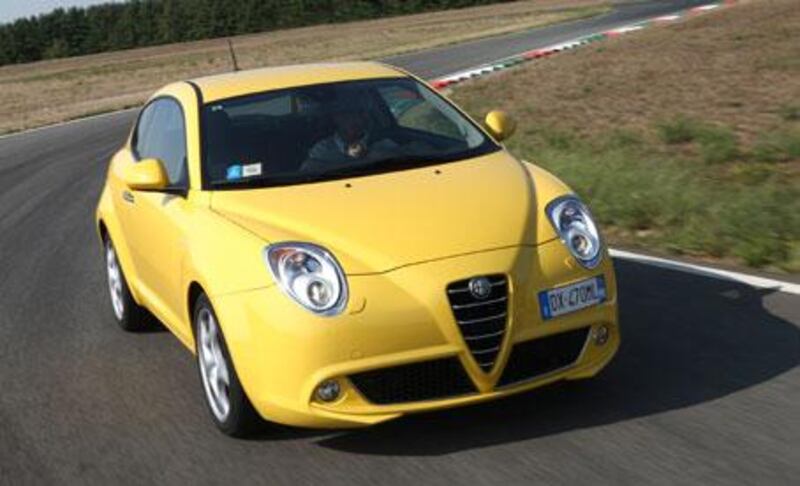The Alfa Romeo MiTo MultiAir has come as such a shock that it's taken me completely out of my comfort zone. Alfas have, for as long as I can remember, been sold on looks and some chintzy nods to historical glamour while the actual machinery laboured to stay a step behind the Germans and the Japanese. That all stops today. Alfa Romeo has just given the world a look into the future of petrol-powered machines. And it works superbly.
It's not that the MiTo is a perfect machine, even in MultiAir guise. It isn't. The doors are ridiculously long, making the B-segment driver search for D-segment parking spaces. There's nowhere to put anything in the cabin, the front overhang is enormous and the boot lip high. But you forget much of this when you drive the new, improved MiTo with its groundbreaking engine. The car is now the cutting edge of Alfa technology and it is a technology that, it claims, will eke at least another 20 years out of ye olde worlde petrol engines.
It's not just a new and developing engine technology, either. It's good, too. The 135hp version is so strong across the board that, with some justification, it dispenses with the weightier six-speed manual gearbox of its 155hp predecessor and opts for a wider-spread five speeder. It is a strong, strong engine that feels more like a mid-sized six pot than a turbocharged 1.4L four cylinder. The numbers say it runs 180Nm of torque at an astonishingly low 1,750rpm, but that jumps to 206Nm in the over-boosting Sport mode. Given that it weighs only 1,135kg, that's more than enough to accompany the 135hp. That peak number arrives at 5,000rpm and doesn't fade too much until after 6,000, so it gives the MiTo a spread of usable strength that most four-cylinder drivers can only dream about.
It's so strong, in fact, that it will pull up slight hills with no complaints from just 1,000rpm in fifth gear, so there's no reasonable way that you will ever catch it in a grumpy mood. There's none of the traditional off-boost blah, either, and the MultiAir's strength down low even lessens the surging feel of the turbo once it does kick in properly. Alfa claims it will sprint from zero to 100kph in 8.4 seconds, which feels a touch pessimistic, and says it will top out at 207kph. Neither figure really matters, though, because it's just got so much strength everywhere, all the time, that its rolling in-gear acceleration feels much stronger from behind the wheel than it does on a specification sheet.
That's because instead of having an inlet and an exhaust cam each whizzing around up at the top of the engine to open and close valves, the MultiAir uses just one exhaust cam, but sticks an extra lobe on it to pump the hydraulic fluid that is the key to the inlet system. Passing through a solenoid, the fluid is what pushes the intake valves open. The solenoid controls the timing, duration and lift of the valves and all this can be altered according to the load on the engine. The real key of this is that it removes the compromise and complexity of conventional systems, even if they have variable-valve timing.
"Every normal engine was designed to operate best above 6,500rpm, so we are losing a lot of energy around town," MiTo MultiAir engine project manager, Massimo Fulforo says of a conventional, petrol-powered engine. "This system can even open twice in the same stroke to deliver the best performance wherever it is in the rev range." It sounds simple, but making it work properly has been incredibly difficult for Alfa. Fortunately, driving it isn't.
You just push down on the pedal, at any rpm, and it works. It's the most flexible car Alfa has ever made and there's no obvious weak point in the driveline. The MultiAir system hasn't robbed it of any sweetness, either. It's all still there and breathes with more freedom than the old twin-cam did. There have also been fiddles to the steering system to make it a bit more stable in a straight line and to help it turn in more reliably. It's now more precise and stronger.
But every other change is dominated by an engine that introduces something completely new, but doesn't trumpet it from the mountain tops. It just torques the torque and gets on with it. And it's finally an Alfa where you can like it for what it is, and not need to justify it by explaining to your friends about the myth behind it all. And it's about time, too.






